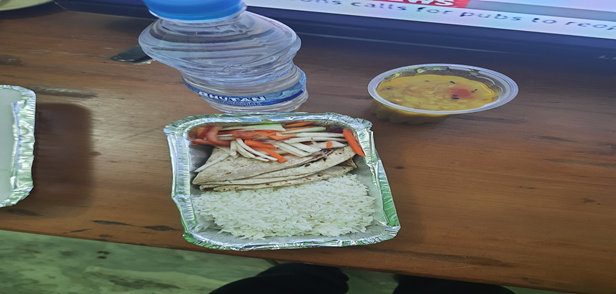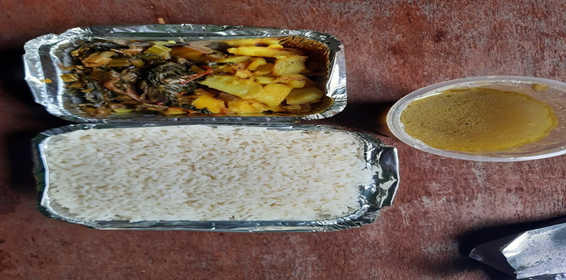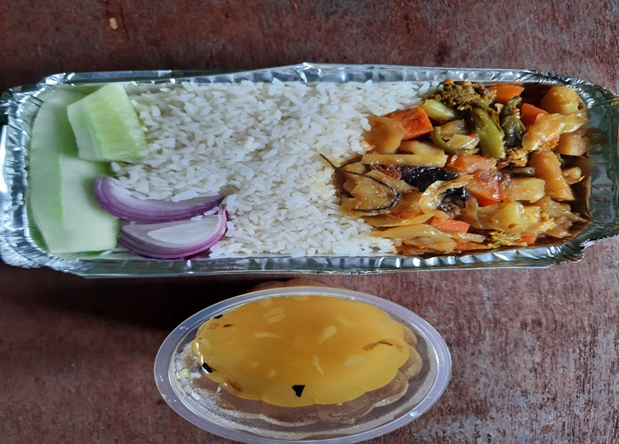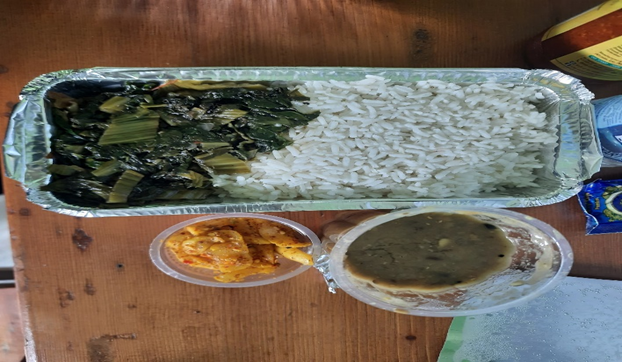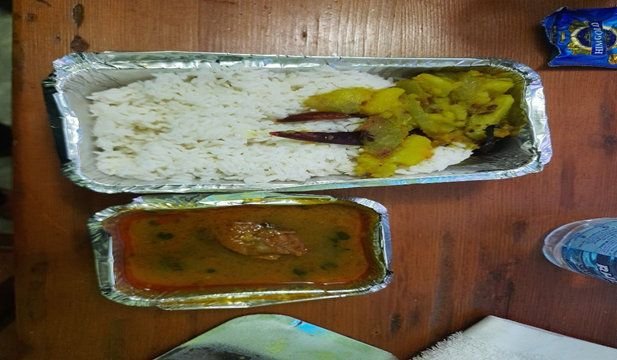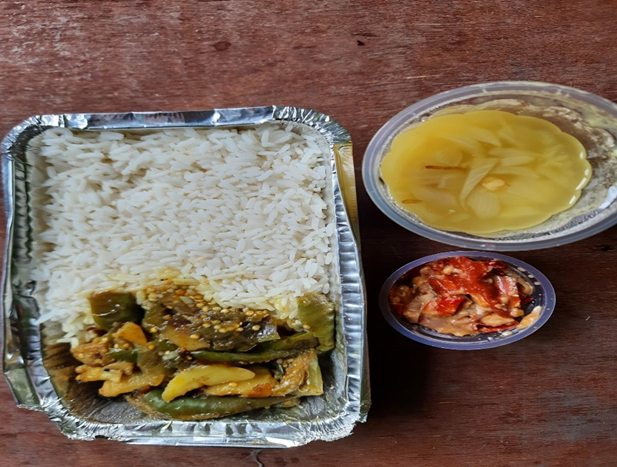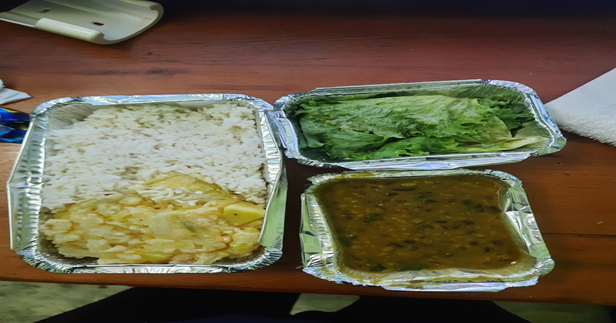This study was conducted by Ran Singh Tamang, Tshering and Sonam Rinchen at Samtse College of Education. It was published in one of international journals at Singapore. Check the link to read the full paper. http://ojs.bonviewpress.com/index.php/CETR/article/view/68/53
Abstract
Infusion of technology in education has tremendous potential to enhance students’ learning and enable them to become competent and prepare for their future career. The study explored the impact of educational technology tools on the learning achievement of B.Ed. science students in Ecology at Samste College of Education, Bhutan. The study adopted a quasi-experimental design and the study was guided by postpositivist worldview. Pretest and posttest were administered before and after the intervention. Purposive sampling was used to select one section of students at Samtse College of Education. The quantitative data were collected by using the survey questionnaire. The qualitative data was collected using semi-structured interviews. The quantitative data were analysed statistically using SPSS and qualitative data were analysed thematically. The findings of the study revealed that students have positive opinion towards various educational technology tools as it made the learning interesting and fun. The mean difference between pretest and posttest was 8.6 indicating that educational technology tools has enhanced students learning achievement in Ecology. Triangulation of three data sources such as survey questionnaire, interview and literature also revealed that educational technology tools enhance students’ learning achievement. There are numerous advantages of using educational technology tools in teaching, learning and assessment. Some of the advantages of educational technology tools are gaining attention, motivating students, encouraging interaction and independent learning. The finding also listed some challenges of using educational technology tools such as time management, understanding new educational technology, adaptability struggle, distraction, technical issues, and limited ICT knowledge. Educational technology tools integrated in the module will be further replicated by student teachers in schools. Therefore tutors were recommended to use variety of educational technology tools in learning, teaching and assessment. However, the finding of the study revealed that lack of knowledge on various educational technology tools was main factor that inhibits tutors from using it. Therefore professional development trainings on various educational technology tools were recommended.
Discussion
The section discusses some of the main findings of the study with relation to the literature reviewed for the study. The section presents the comparison of the finding of the study with the existing literature. They are discussed under the opinion of students towards educational technology tools, advantages, and challenges of using various kinds of educational technology tools.
The study found that students have a positive opinion towards various educational technology tools used in teaching and learning Ecology. Students shared that learning Ecology with different kinds of educational technology tools was fun and interesting. This was because children born in the 21st century were digital native and were more grounded to learn through different kinds of educational technology tools. Sarkar et al. (2017) found 61 per cent of digital natives favoured in incorporating more educational technology tools into their courses. Brick and Homes (2008) revealed that audio feedback was well received by the students. Student rated video feedback more effective than the written feedback (McLaughlin et al., 2007). However, in the study, Padlet was the most favoured educational technology tool followed by Big Blue Bottom-video conferencing. The majority favoured Padlet, perhaps it motivated student to participate in various class activities, lowered anxiety, and encouraged interaction among students and tutors (Rashid et al., 2019)
Triangulation of three data sources of data such as learning achievement test, survey questionnaire and interview revealed that educational technology tools used to teach Ecology enhanced students’ learning achievement. The finding of the study was consistent with the finding of various studies done on educational technology and student learning outcome (Wheeler. 2001; Harris, 2002; Smeets, 2005). Student learning achievement in Ecology was enhanced because educational technology tools provided various opportunities to construct knowledge (Cabero, 2001; Berge, 1998; Barron, 1998) and improve the communication between them and their tutors (Valasidou & Bousiou, 2005). Educational technology tools also increased their engagement with their learning (Wilkie et al., 2018).
The literature and the finding of the study identified a number of advantages for educational technology tools. Some of the common advantages of educational technology tools in literature and the finding of the study were students’ motivation (Balanskat et al., 2006; Kozma, 2005; Kulik, 2003; Webb & Cox, 2004), gaining attention (Comber et al.,2002); EUN, 2004), encouraging interaction (Rashid et al., 2019) and independent learning skill (Kozma, 2005; Kulik, 2003; Webb & Cox, 2004). Besides finding of the study, literature also listed some of the advantages of the educational technology tool. The advantages were easy to access (Meyer et al., 2008), improved pronunciations, commitments, assessed themselves (Meyer et al., 2008), innovated and deepened their learning.
Other reasons for the increase in students’ learning achievement may be because students were more motivated and attentive when teachers used many different kinds of educational technology tools (Comber et al, 2002; EUN, 2004). Tutors could also make their lesson more attractive and lively by using different kinds of educational technology tools. This would indeed have inspired, engaged and motivated students to learn more (Long, 2001; Wood, 2004).
One of the findings of the study revealed that educational technology tools enhanced student independent learning skills. Students assumed greater responsibility for their own learning when tutors incorporated various educational technology tools (ITU, 2004). Therefore, it would have promoted the paradigm shift from traditional-teacher centered to learner-centered learning (Ramboll, 2006).
The findings showed that students faced several challenges while learning Ecology using various educational technology tools. The challenges were time management, understanding new educational technology, adaptability struggle, distraction, technical issues, and limited ICT knowledge. In addition, literature also listed some challenges such as complexity (Schoepp, 2005), lack of resources (Becta, 2004; Al‐Alwani, 2005), scarcity of educational hardware and software (Toprakci, 2006) and lack of effective training for the tutors (Toprakci, 2006; Ghavifekr & Wan Athirah, 2015). Wilkie et al., (2018) reported that the use of educational technology tools increased student engagement with their learning, and maintained the student retention rate. However, the finding from questionnaire data showed that students rarely agreed educational technology tools prevented them from getting stress. Nevertheless, this happened because they were learning Ecology with technology for the first time as Student 3 have expressed, “Once when we are used to these educational technology tools, we will learn better”.
Martin (2019) strongly believes that educational technology tools cannot substitute teachers but teachers can incorporate them to reinforce interaction between teachers and students. Teachers’ job in the digital age is to guide, monitor, facilitate and scaffold students using different kinds of educational technology tools. Students should be more responsible and take ownership of learning. They should be independent learners and targets for lifelong learning. Educational technology tools should play a key role in enhancing lifelong learning skills for the students.
Conclusion
The study explored the impact of using educational technology tools on the students’ learning achievement in Ecology. The finding of the study revealed that students have positive opinion towards various educational technology tools as it made the learning Ecology fun and interesting. Students like tools such as interactive PowerPoint ‘Camtasia edited video’ and ‘Interactive video lesson’ to learn Ecology. However, the most preferred tools was Padlet. The least preferred tools were whiteboard, VLE quiz and Poll Everywhere.
The mean difference between pretest and posttest was 8.6. This indicated that educational technology tools has enhanced students learning achievement in Ecology. The value of standard deviation was also low indicating students’ posttest scores were clustered and located at the higher-end whereas students’ pretest scores were scattered and located at the lower end. Triangulation of three data sources such as survey questionnaire, interview and literature also revealed that educational technology tools enhance students’ learning achievement. It had also enhanced student interactive and independent learning skills. The students have agreed that they have enjoyed learning Ecology using a different kind of educational technology tools. However, some students expressed that they were stressed because they were learning Ecology with various kinds of technology for the first time in their life.
Educational technology tools have both advantages and challenges. The advantages of using educational technology tools includes gaining students’ attention, motivating students, encouraging interaction and independent learning skill, easy to access, improving pronunciations, commitments, assess themselves and innovations. Educational technology tools have several limitations or challenges. Some of the challenges of incorporating educational technology tools are its complexity, lack of resources, time management, limited ICT knowledge and technical issues.
Recommendations
The finding revealed that the lack of training for both teachers and students was the main factor that prevented them from using educational technology tools in teaching and learning Ecology. Therefore, training on educational technology for both teachers and students is recommended. Since educational technology tools have arose excitement and curiosity amongst students, they recommended other module tutors to use educational technology tools as well. Educational technology tools integrated in the module will be further replicated by students teacher during teaching practice or as a full fledge teacher. Therefore tutors were recommended to use variety of educational technology tools in learning, teaching and an assessment.
Acknowledgement
The College Research Stimulus Fund (CRSF) funded this study. Authors would like to thank Samtse College of Education for financial support.
Reference
Abdous, M. H., & Yoshimura, M. (2010). Learner outcomes and satisfaction: A comparison of live video-streamed instruction, satellite broadcast instruction, and face-to-face instruction. Computers & Education, 55(2), 733-741.
Al-Alwani, A. E. S. (2005). Barriers to integrating information technology in Saudi Arabia science education. University of Kansas. Retrieved from https://tinyurl.com/y8u3otgz
Al-Ansari, H. (2006). Internet use by the faculty members of Kuwait University. The Electronic Library, 24(6), 791-803. https://doi.org/10.1108/02640470610714224
Albrini, A. (2006). Cultural perceptions: The missing element in the implementation of ICT in developing countries. International Journal of Education and Development Using Information and Communication Technology, 2(1), 49-65. Retrieved from https://tinyurl.com/y8ulr7bo
Balanskat, A., Blamire, R., & Kefala, S. (2006). The ICT impact report: A review of studies of ICT impact on schools in Europe. European Communities.
Balanskat, M. (2006). The impact of information and communication technologies on student learning and attainment. Becta, London.
Barron, A. (1998). Designing Web-based training. British Journal of Educational Technology, 29(4), 355-371.
Becta. (2004). A review of the research literature on barriers to the uptake of ICT by teachers UK. Retrieved from http://www.becta.org.uk/page_documents/research/barriers.pdf
Berge, Z. (1998). Guiding principles in Web-based instructional design. Education Media International, 35(2), 72-76.
Bingimlas, K. A. (2009). Barriers to the successful integration of ICT in teaching and learning environments: A review of the literature. Eurasia Journal of Mathematics, science and technology education, 5(3), 235-245.
Creswell, J. W. (2014). Research Design: Qualitative, Quantitative and Mixed Methods Approaches (4th ed.). Thousand Oaks, CA: Sage
Coates, D., Humphreys, B. R., Kane, J., & Vachris, M. A. (2004). No significant distance between face-to-face and online instruction: Evidence from principles of economics. Economics of Education Review, 23(5), 533-546.
Comber, C., Watling, R., Lawson, T., Cavendish, S., McEune R., Paterson, F. (2002). ImpaCT2: Learning at Home and School: Case Studies. A report to the DfES. ICT Research and Evaluation Series No.8. Retrieved from http://www.becta.org.uk/research
Cuban, L. (2003). Oversold and Underused: Computers in the Classroom. Harvard University Press.
Davis, N.E., & Tearle, P. (Eds.). (2004). A core curriculum for telematics in teacher training. Available: www.ex.ac.uk/telematics.T3/corecurr/tteach98.htm.
Fernández, G., Chowdhury, B., & Bevinakoppa, S. (2015). Using screen capture for teaching and learning. Recent advances in computer-supported education, 38-42.
Flecknoe, M. (2002). How can ICT help us to improve education? Innovations in Education & Teaching International, 39(4), 271-280.
Ghavifekr, S., & Rosdy, W. A. W. (2015). Teaching and learning with technology: Effectiveness of ICT integration in schools. International Journal of Research in Education and Science, 1(2), 175-191.
Harris, S. (2002). Innovative pedagogical practices using ICT in schools in England. Journal of Computer Assisted Learning, 18(4), 449-458.
Jones, A. (2004). A review of the research literature on barriers to the uptake of ICT by teachers.
Kinley, Zander, P. O., Georgsen, M., & Choeda. (2013). The usage of ICT for teaching at a Bhutanese College. International Association of Technology Education and Development, 4126-4135.
Kozma, R. B. (2005). National policies that connect ICT-based education reform to economic and social development. Human Technology: An interdisciplinary journal on humans in ICT environments, 5(4), 358-367.
Kulik, J. A. (1994). Meta-Analysis Study of Findings on Computer-Based Instruction, Report on the Effectiveness of Technology in Schools, 50(4), 1990-1997. http://doi.org/ 10.2307/1170294
Lawson, T., & Comber, C. (2014). Videoconferencing and learning in the classroom: the effects of being an Orphan Technology. The International Journal of Technologies in Learning, 20(1), 69-79. Retrieved from https://tinyurl.com/y9t8s9nm.
Le Lant, C., & Lawson, M. J. (2016). Interactive whiteboard use and student engagement. In Publishing Higher Degree Research, 33-42.
Long, S. (2001). Multimedia in the art curriculum: Crossing boundaries. Journal of Art and Design Education, 20(3), 255-263.
Martin, S. (2007). Interactive whiteboards and talking books: A new approach to teaching children to write? Literacy, 41(1), 26-34.
McLaughlin, P., Kerr, W., & Howie, K. (2007). Fuller, Richer Feedback, More Easily Delivered, using Tablet PCs. Proceedings for the 11th International Conference on Computer-Aided Assessment, Loughborough University, Loughborough, 327-340.
Meyer, B., Haywood, N., Sachdev, D., & Faraday, S. (2008). What is independent learning and what are the benefits for students. Department for Children, Schools and Families Research Report, 51.
MoE (2012). iSherig: Education ICT Master Plan 2014-2018. Retrieved from https://planipolis.iiep.unesco.org/sites/planipolis/files/ressources/bhutan_education_ict_master_plan.pdf
Murairwa, S. (2015). Voluntary Sampling Design. International Journal of Advanced Research in Management and Social Science. 4(2), p185-200
Noor-Ul-Amin, S. (2013). An effective use of ict for education and learning by drawing on worldwide knowledge, research, and experience. ICT as a Change Agent for Education. India: Department of Education, University of Kashmir, 1-13.
Özden, M. (2007). Problems with science and technology education in Turkey. Eurasia Journal of Mathematics, Science & Technology Education, 3(2), 157‐161.
Plomp, T., Pelgrum, W. J., & Law, N. (2007), SITES2006—International comparative survey of pedagogical practices and ICT in education. Education and Information Technologies. 12 (2) 83- 92.
Rabgay, T. (2014). A Study of Factors Influencing Students’ Academic Performance in a Higher Secondary School in Bhutan. RABSEL; CERD Educational Journal, 16(2), 74-97.
Rashid, A. A., Yunus, M. M., & Wahi, W. (2019). Using Padlet for collaborative writing among ESL learners. Creative Education, 10(3), 610-620.
Sanacore, J. (2008). Turning reluctant learners into inspired learners. Clearing House: A Journal of Educational Strategies, Issues and Ideas, 82(1), 40-44.
Schoepp, K. (2005). Barriers to technology integration in a technology‐rich environment. Learning and Teaching in Higher Education: Gulf Perspectives, 2(1), 1‐24.
Serdyukov, (2017). Innovation in education: what works, who doesn’t, and what to do about it? Retrieved from https://tinyurl.com/yctagp22
Shi, Y., Yang, Z., Yang, H. H., & Liu, S. (2012, September). The impact of interactive whiteboards on education. In Proceedings of the 4th International Conference on Internet Multimedia Computing and Service, 213-218.
Smeets, E. (2005). Does ICT contribute to powerful learning environments in primary education? Computers & Education, 44, 343-355.
Sosin, K., Lecha, B. J., Agarwal, R., Bartlett, R. L., & Daniel, J. I. (2004). Efficiency in the use of technology in economic education: Some preliminary results. American Economic Review, 94(2), 253-258.
Stockwell, G. (2012). Computer-assisted language learning diversity in research and practice. Cambridge: Cambridge University Press.
Thomas, L(2021). An introduction to quasi-experimental design. Retrieved from https://www.scribbr.com/methodology/quasi-experimental-design/
Toprakci, E. (2006). Obstacles at integration of schools into information and communication technologies by taking into consideration the opinions of the teachers and principals of primary and secondary schools in Turkey. Journal of Instructional Science and Technology(e‐JIST), 9(1), 1‐16.
Trilling, B.. & Fadel, C. (2009). 21 st century skills: Learning for life in our times. Jossey-Bass.
Tshering. (2019). Students’ perspectives on rubric usage in educational assessment and evaluation. Asian Journal of Research. 1(3), 92-100. Retrieved from https://tinyurl.com/y7xdcw3t.
Tshering (2018). The effects of using rubrics on the learning achievement of students in Educational Assessment and Evaluation. EIP: Biannual Journal of Samste College of Education, 1(3), 75-88.
U.S. Dept. of Education. (2010). Evaluation of Evidence-Based Practices in Online Learning: A Meta-Analysis and Review of Online Learning Studies. Washington, D.C.
Valasidou, A., Sidiropoulos, D., Hatzis, T., & Bousiou-Makridou, D. (2005). Guidelines for the Design and Implementation of E-Learning Programmes, Proceedings of the IADIS. International Conference IADIS E-Society 2005, 27 June- 30 June, Qawra, Malta.
Verdaguer, J. (2019), October 16). Moodle – the world’s open source learning platform announces the integration of H5P. https://moodle.com/news/moodle-announces-h5p-integration/
Wangdi, T. (2012). ICT Lab Put to Optimal Use. Retrieved from http://www.bhutanobserver.bt/ict-lab-put-optimal/
Webb, M., & Cox, M. (2004). A review of pedagogy related to information and communications technology. Technology, pedagogy and education, 13(3), 235-286.
Wheeler, S. (2010). The New Smart Devices for Learning. Proceedings from Learning Technologies 2010. Conference, London
Wilkie, S., Zakaria, G., McDonald, T., & Borland, R. (2018). Considerations for designing H5P online interactive activities. Open Oceans: Learning without borders. Proceedings ASCILITE, 543-549.
Woessmann, L., & Fuchs, T. (2004). Computers and student learning: Bivariate and multivariate evidence on the availability and use of computers at home and at school. CESifo Working Paper Series 1321, CESifo.
Wood, R., & Ashfield, J. (2008). The use of the interactive whiteboard for creative teaching and learning in literacy and mathematics: A case study. British Journal of Educational Technology, 39(1), 84-96.
Authors
Ran Sing Tamang is a Biology Lecturer at Samtse College of Education. He did M.Sc Zoology from India. He is very passionate about educational technology and he can be connect through his Youtube Channel https://www.youtube.com/channel/UC5ZxqxH2_mGuVczAITGkj2g
Mr. Tshering is a Lecturer at Samtse College of Education under Royal university of Bhutan. He did his Masters from Bangkok. His research area are educational assessment, rubrics, ICT integration and active learning approach. He can be connect through his blog https://tsheringsce.wordpress.com/
Dr. Sonam Rinchen is a Professor at Samtse College of Education, RUB. Currently he is serving as a Dean of Academic Affairs in the College. He has done numerous research in education. He did his PhD in Education from Australia and masters from Canada. He can be contracted through srinchen.sce@rub.edu.bt








